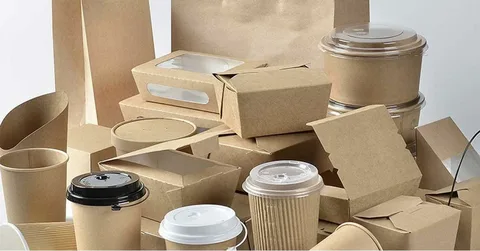The on-the-go food packaging market is experiencing a transformative shift, driven by evolving consumer preferences, technological advancements, and heightened environmental awareness. As lifestyles become increasingly fast-paced, the demand for convenient, portable, and sustainable food packaging solutions has surged. This article delves into the key developments shaping this dynamic sector.
1. Surge in Demand for Sustainable Packaging
One of the most significant trends in the on-the-go food packaging market is the growing emphasis on sustainability. Consumers are increasingly concerned about the environmental impact of packaging, leading to a surge in demand for eco-friendly and biodegradable packaging materials. Manufacturers are responding by developing sustainable packaging options, such as compostable containers and reusable packaging solutions.
Notable innovations include seaweed-coated takeaway packaging, which is biodegradable and can replace over 100 million plastic containers across Europe. Additionally, companies like Biocup are expanding their operations into new markets, offering biodegradable, recyclable, and compostable packaging solutions.
2. Integration of Smart Packaging Technologies
The integration of digital technology in packaging has become more prevalent. QR codes and augmented reality features on packaging enable consumers to access additional product information, promotional offers, and even interactive content, enhancing the overall consumer experience.
For instance, Tetra Pak has introduced smart packaging for fruit juice, where scanning a QR code leads users to an interactive personality test to help them choose their favorite beverage concoction.
3. Advancements in Active and Self-Heating Packaging
Active packaging technologies are evolving to enhance food preservation and convenience. These innovations include packaging materials that interact with the contents to extend shelf life and maintain food quality.
Self-heating food packaging is another notable development, allowing consumers to heat their meals without external heat sources. This technology utilizes exothermic chemical reactions to generate heat, providing a convenient solution for situations where traditional cooking methods are unavailable.
4. Rise of Edible and Biobased Packaging Solutions
The exploration of edible and biobased packaging materials is gaining momentum. Researchers from the Indian Institute of Technology (IIT) Roorkee have developed Kodo millet-based edible cups, which are biodegradable and offer an eco-friendly alternative to conventional plastic packaging.
Biobased packaging, produced using natural resources like bamboo and seaweed, is also on the rise. These materials are biodegradable and have a positive environmental impact, aligning with the growing consumer demand for sustainable packaging options.
5. Regulatory Pressures and Industry Responses
Regulatory bodies are implementing stricter measures to curb the use of single-use plastics. For example, the European Parliament has approved a proposed law to ban certain single-use plastic packaging, such as mini shampoo bottles in hotels and thin plastic grocery bags, aiming to reduce packaging waste.
In response, companies are adopting alternative materials and redesigning packaging to comply with these regulations. The shift towards sustainable packaging is not only driven by consumer preferences but also by the need to adhere to evolving environmental policies.
6. Challenges in Adoption and Market Growth
Despite the advancements, the adoption of sustainable packaging faces challenges. High costs associated with sustainable materials and limited recycling infrastructure hinder widespread implementation.
Additionally, the design and material selection process for user-friendly and convenient packaging can be complex, impacting the affordability and accessibility of sustainable options. Overcoming these barriers requires collaboration among manufacturers, policymakers, and consumers to develop cost-effective and efficient solutions.
7. Future Outlook
The on-the-go food packaging market is poised for continued growth, driven by technological innovations, regulatory developments, and shifting consumer preferences. The emphasis on sustainability, convenience, and digital integration will shape the future of packaging solutions.
Companies that invest in research and development to create eco-friendly, functional, and engaging packaging will likely lead the market. Moreover, the collaboration between industry stakeholders and adherence to environmental regulations will play a crucial role in fostering a sustainable and thriving on-the-go food packaging industry.
In conclusion, the on-the-go food packaging market is undergoing significant transformations, with sustainability and innovation at the forefront. As the industry adapts to meet the demands of modern consumers and regulatory standards, the future of food packaging looks promising, offering solutions that are not only convenient but also environmentally responsible.







